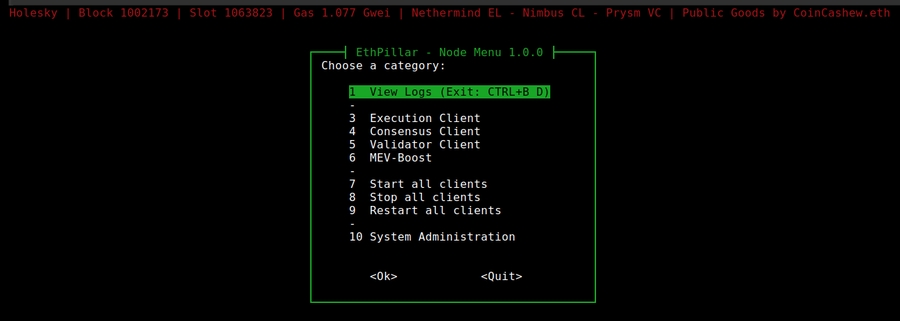Next Steps
🎉 Congrats! You've finished the primary steps of setting up your validator. You're now an Ethereum staker!
⏭️ FAQ
👍 Recommended Steps
🗞️Subscribe to your Execution Client and Consensus Client's Github repository: Be notified of new releases. Find the Github links on each EL/CL's Overview section. At your EL or CL's github page while logged in, click the Watch button > Custom > click the checkbox for "Release".
😄Join Community: Join the community on Discord and Reddit to discuss all things staking related.
🛠️Node Maintenance: Familiarize yourself with Part II - Maintenance section, as you'll need to keep your staking node running at its best.
📚Study EthStaker Knowledge Base: Increase your staking understanding
💿Backups: Review your staking validator backups!
🤞Finished testing? Before decommissioning your validator, it's good practice to properly exit your validator as this improves staking network health.
🏁 Optional Steps
🤖MEV-boost: Setup MEV-boost for extra staking rewards!
📊Monitoring: Setup Monitoring with Grafana and Prometheus
⛓️RPC: Setup using your own Node as a RPC endpoint.
📱Notifications: Setup Mobile App Notifications and Monitoring by beaconcha.in
🆙External Monitoring: Setup External Monitoring with Uptime Check by Google Cloud
📚Knowledge: Familiarize yourself with Part III - Tips section, as you dive deeper into staking.
☎️ Need extra live support?
Find Ethstaker frens on the Ethstaker Discord and coincashew Discord.
Use reddit: r/Ethstaker, or DMs, or r/coincashew
💟 Like these guides?
Audience-funded guide: If you found this helpful, please consider supporting it directly. 🙏
Support us on Gitcoin Grants: We build this guide exclusively by community support!
Feedback or pull-requests: https://github.com/coincashew/coincashew
Ready for mainnet staking? Mainnet guide available here.
Last Words
I stand upon the shoulders of giants and as such, invite you to stand upon mine. Use my work with or without attribution; I make no claim of "intellectual property." My ideas are the result of countless millenia of evolution - they belong to humanity.

Last updated
